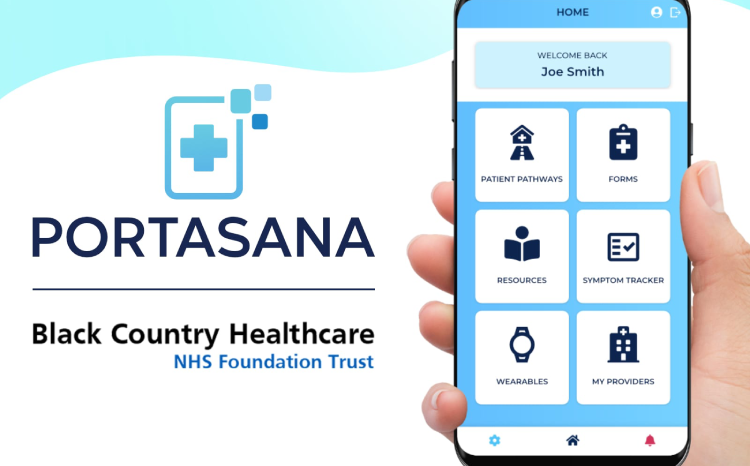TRUE blue
- 12 August 2014

Oxford University Hospitals NHS Foundation Trust had some obstacles to overcome in its implementation of Cerner Millennium.
On a site visit organised as part of the first Health CIO summer school, John Skinner, the trust’s director of IM&T services acknowledged that it isn’t in a position to dish out advice on how to perfectly implement an electronic patient record.
In fact, he told his 40 visitors that: “One of the lessons is that there isn’t a right way – we don’t pretend that we’ve got everything right.”
However, one of the things that Skinner has learned – and that he thinks others can learn from – is that persistence pays. “There’s a great deal of sense in taking a constant view over a long period of time: whatever you do, you need to stick with it.”
Paul Altmann, the trust’s chief clinical information officer, said the goals of the project and the need for continuity were literally spelled out to staff during the implementation process.
Posters were placed around the John Radcliffe Hospital with the acronym TRUE, standing for the four main benefits expected from the project: transparent access, real-time patient location, universal e-requesting and results, and e-prescribing and medicines administration.
A bad year
Oxford was one of three ‘greenfield’ sites in the South of England that were scheduled to receive Millennium from BT as part of the National Programme for IT, after Fujitsu had exited the programme with its Cerner deployments only partially completed.
In November 2011, the acute trust merged with the Nuffield Orthopaedic Centre, which was the first in the South to go live with the system under the old arrangements in December 2005.
One month later, it switched off its old patient administration system, while also changing over to Cerner Millennium in A&E and its maternity department.
Skinner said the changes were a stressful time for the trust, with data quality issues taking 12 to 18 months to resolve; rather than the anticipated six to nine months.
“We had a lot of problems because the product didn’t work, we were running on paper – it was one of the worst years of my life.”
More than two years later, the picture looks significantly rosier. Skinner said the trust now has full clinical implementation in its maternity and emergency departments, is live with an order communications system, and has 80%-90% usage rates in inpatients and 70% in outpatients.
Maternity – live not once, but twice
The trust’s maternity department has had ample experience of Millennium. It went live with a maternity configuration in 2011 that did not meet expectations, and then worked on enhanced functionality for the system ahead of a second go-live in April last year.
“We had the fortune to go live twice in maternity, so we learnt a lot of lessons the first time,” said Sylvia Ashton, the trust’s clinical midwifery manager.
Ashton explained that the latest iteration allows midwives to see emergency admissions while also ensuring that emergency department staff can view a patient’s clinical records.
It has also replaced the maternity ‘blue notes’ to provide clearer communication between staff. “Everybody can see that we’ve followed the pathways through and see what we’ve done to engage.”
After holding just one day of training before the first go-live in 2011, two days of training were organised ahead of the second, with scenario work to make sure staff were more engaged with the system.
“We found some people came along with us then, some people are only now coming along with us, and there are others who we need to work with a bit harder,” Ashton said.
She added that the EPR has been most helpful in the post-natal ward – the department’s busiest, with up to 25 discharges a day – where it has “revitalised” staff and made it easier for them to manage their workloads.
Importantly, the EPR has also led to significant financial savings within the department.
Tony McDonald, general manager of the children’s and women’s division, described it as “an absolutely key enabler” in moving from level one to level two of the NHS Litigation Authority’s maternity clinical risk management standards – a move that saved the hospital a “significant amount” of money on insurance premiums.
McDonald said the EPR also helped to transform maternity from a department that lost several million pounds a year to one that now breaks even, by more accurately recording its activity and making sure it can secure payments for the work it does.
Now for e-prescribing, document management, and sharing
The trust is now focusing on an e-prescribing and medicines administration project. Skinner said integration testing has now been completed for the system, which is set to go live in October with a seven-month rollout across seven different parts of the hospital.
The trust is also trying to promote wider uptake of the Oxfordshire Care Summary – a local information sharing system – with GPs and pharmacists.
This should make sure that vital information can be shared between care providers without too many gaps. “There has been mixed adoption: things are changing, but it will take time.”
Electronic document management is another issue that the trust will deal with over the next two to three years, with plans to import all referrals and clinical records into Millennium.
“We’re planning to go digital and stop creating paper: there are thousands of different forms, and several varieties of the same thing.”
Skinner said the trust is focussed on avoiding back-scanning where possible. However, he conceded that some will be necessary to meet requirements and provide access to some of more than 2m case notes across the trust’s 23 specialist libraries.
“We’re thinking we need to get as much online as possible before we scan. We’ve got to do day-forward scanning. We want to avoid back-scanning and we’re trying to think about it, but we’ll probably have to do some some.”
The case for single supplier
Despite the problems that the trust experienced, Skinner is a strong advocate of the single-supplier approach to EPR.
“If you’ve got a big EPR supplier, they are making millions of pounds of investment into the product. That means it’s getting more sophisticated over time; and you can’t replace that,” he argued.
“It’s not that it [single supplier versus best of breed] is a complete binary choice, but I think we’re made for a big EPR. You’ve got a rules engine that works, you can do clever things, and you have decision support embedded into Cerner.”
Skinner also believes that EPR must be used in a big way if it is to be a success. “If you take a big solution like Cerner and you only use the patient administration system – I think that’s not sensible.”
He argued that the EPR should – as a “bare minimum” – be the home of all alerts, problems, pathology information, prescribing and clinical documentation.
“You need to have one rules engine to do it: all ordering, all results and all prescribing. Pathology, radiology, PACS [digital imaging]: you need rules so all requests have got to go through the EPR.”
However, he acknowledged that integrated web services can act as a useful bridge for specialist systems that function in a way that the EPR can’t.
“If you’ve got a specialist system that works and the EPR doesn’t work, then you can integrate using web services and it can have a presence in Millennium. Bits of Cerner also don’t look very nice, but when you use web services you can make it look a lot better.”
Stick with it
Whatever decision a trust makes, Altmann argues that strong leadership will be crucial to success. “It needs to be clinically led, but if you don’t have a completely committed executive team then you might as well not start, to be honest,” he told the summer school, adding that constantly re-engaging with staff is also crucial.
“It’s an immense cultural change to move people from the comfort of working on paper… to digital, which exposes the whole truth and nothing but the truth.”
Skinner agrees that stability is the key to success – as Oxford is now showing. “If you put a bad system in and implement it very well, you can get good results. But if you chop and change then you’ll never get anywhere.”
Read more about the Oxfordshire Care Summary in the latest in EHI's series on information sharing projects, 'On the buses'. To find out more about the Health CIO Network and the summer school, read the thoughts of EHI editor Jon Hoeksma and advisory group chair Daniel Ray in 'School's in for summer'.




